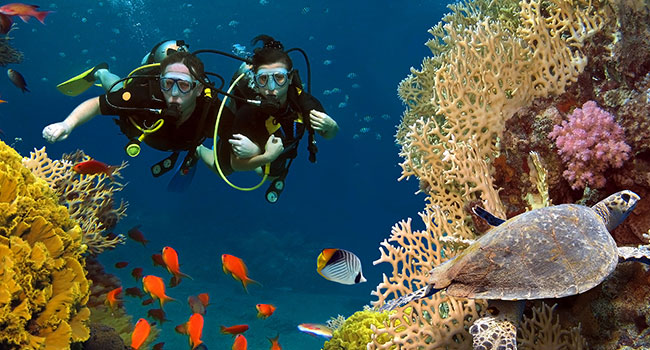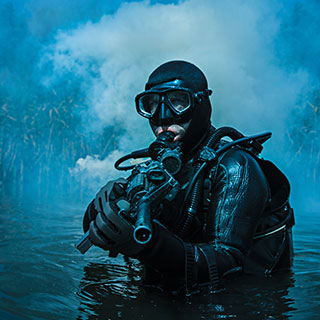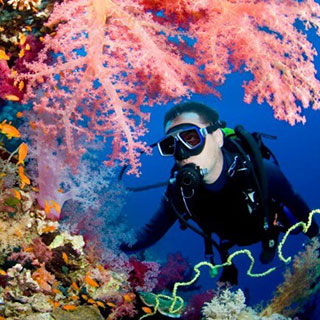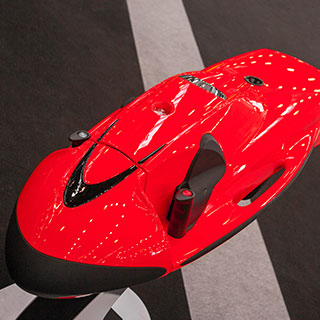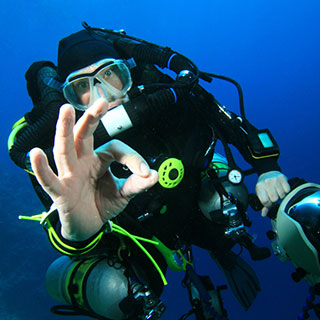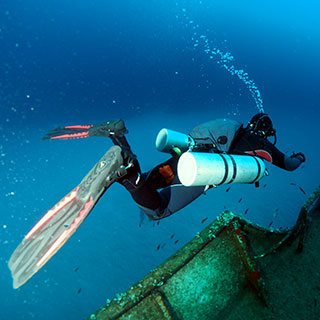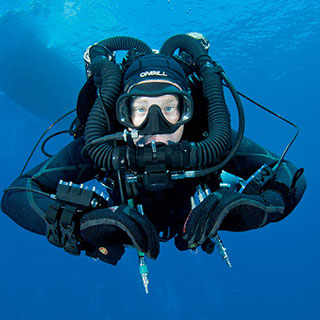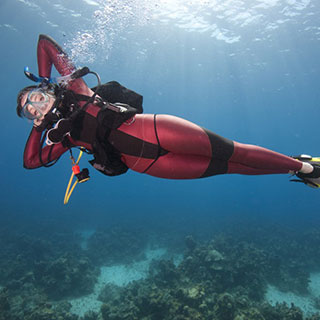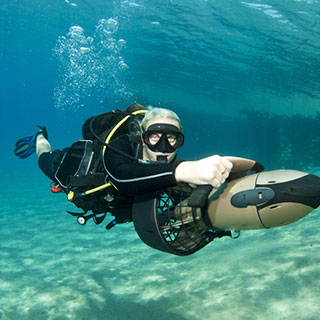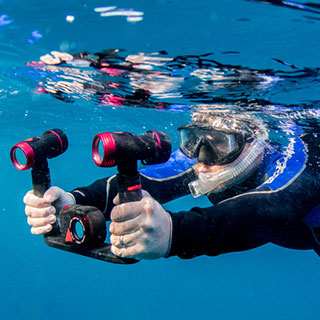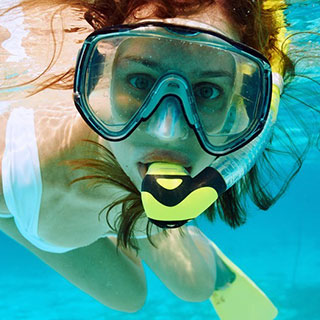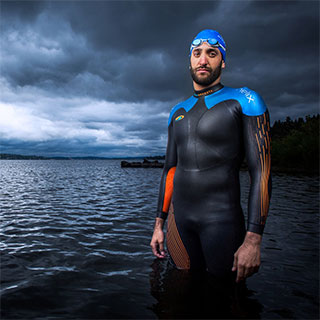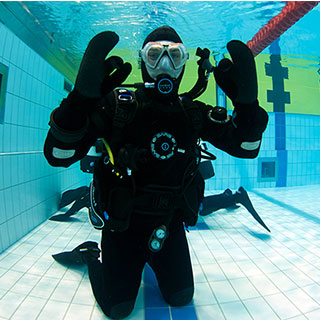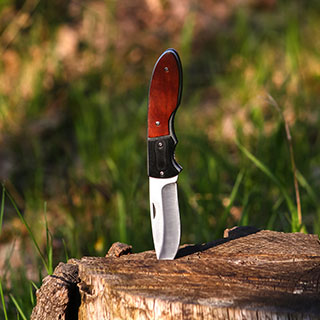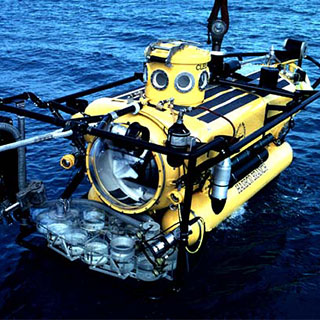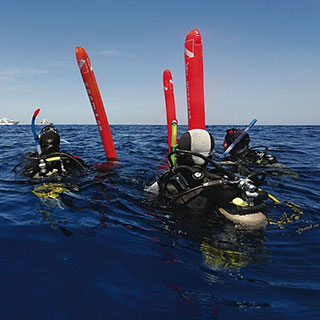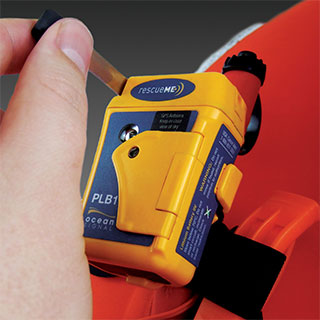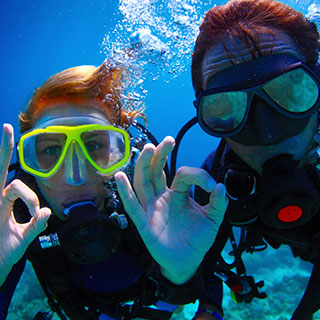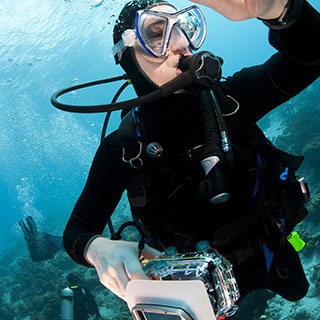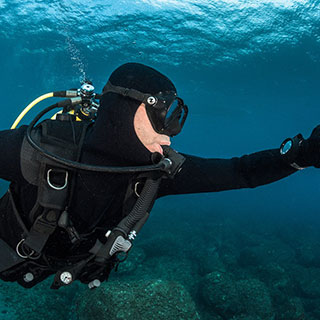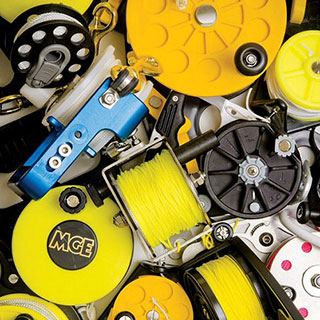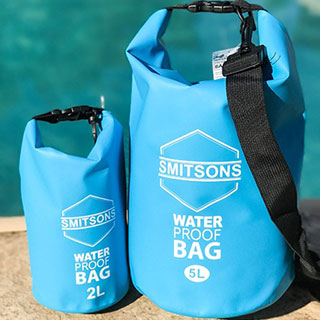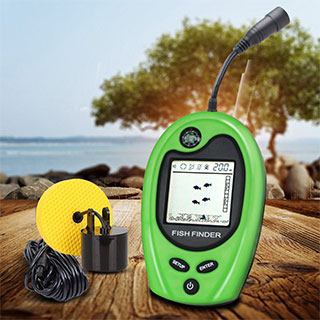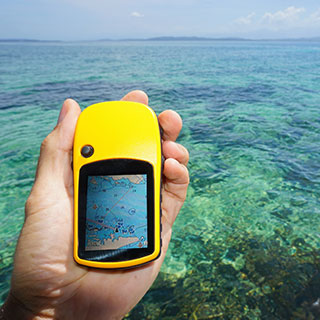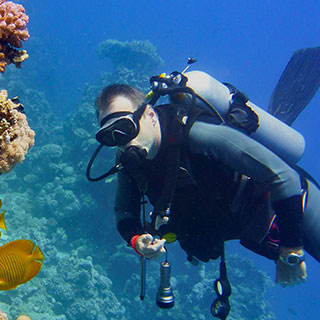AT A GLANCE
Types of Scuba Diving
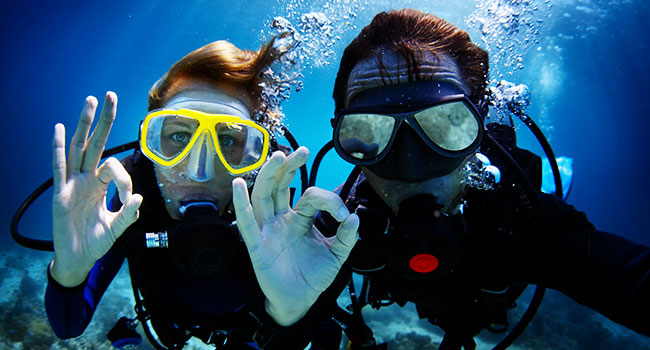 Do you want to dive in deep chasms far beneath the earth, discover ancient wrecks or use natural currents to drift through beautiful coral reefs? There are opportunities for astounding experiences wherever you look.
Do you want to dive in deep chasms far beneath the earth, discover ancient wrecks or use natural currents to drift through beautiful coral reefs? There are opportunities for astounding experiences wherever you look.
If you’re doing scuba diving in the military, you’re amongst the best in the world. It’s not all planting mines on enemy warships and fighting with spearguns though. Most military scuba is checking the safety of vessels; looking for tampering or sabotage, repair work at depth, salvage, welding and cutting, surveying and disposing of underwater ordnance safely.
Professional just means they get paid for it, but these are the guys ‘n’ gals who make it their lives’ work to scuba. Generally a dedicated bunch, they’ve dived everywhere and have the stories to match. Oil rigs, cargo boats, marine salvage, archaeology and scientific research, commercial and government contracts, mapping, building and even enforcing the law. To be a
The rest of us. The holidayers and the amateurs, the “once or twice a year with some friends” kinds of people. Not that it’s a bad thing! Scuba diving can take over your life, so for those of us that maintain a good work/life balance, recreational diving is just fine. You won’t be going much deeper than maybe 130 feet but the hours spent decompressing from deeper dives put
Should I Buy or Rent Gear?
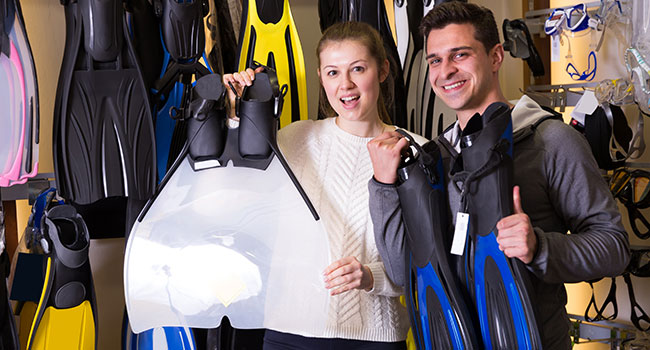
An ill-fitting suit or uncomfortable mask can make what should be an incredible experience into one you wish would just end. And that’s not ok. Nearly all gear can be rented, and yes buying your own is expensive, but with your own gear you’ll be comfortable and worry-free, letting you enjoy the depths of the ocean like you should be. You know the condition of your gear, you bought it and you maintain it, not that shady looking guy on the quay you wouldn’t buy a used car from. A suit that is fitted to you, your own choice of breathing apparatus, fins that won’t drop off if you swim too fast. It all points towards you shelling out just that bit extra for a safer, more enjoyable experience. Worth it? We think so.
Scuba Equipment
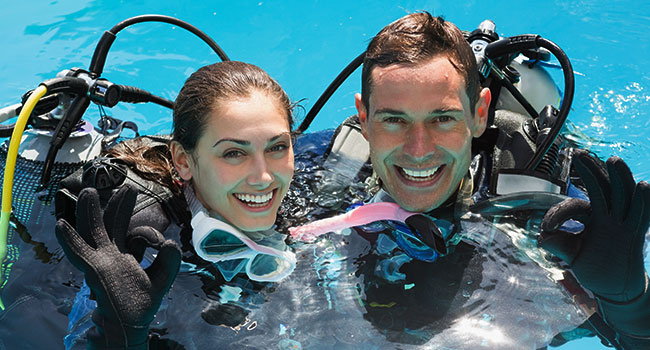 Scuba diving can’t happen without the equipment, that would be swimming. Get the right gear for your body, the environment you’ll be diving in and how you want to explore it.
Scuba diving can’t happen without the equipment, that would be swimming. Get the right gear for your body, the environment you’ll be diving in and how you want to explore it.
1. Breathing Gear
Breathing is important to those of us who want to stay alive, and water isn’t breathable, unfortunately. So what you’re breathing your precious oxygen through is of paramount importance, shop around and try different tech before making your choice (with the help of our guide) and you’ll be A-Oking your buddies underwater in no time. You can spend a lot of money or not as much on your breathing gear but they will all come up to a minimum standard of safety if bought in the US, so it’s really all about how comfortable and cool you want to feel.
This is what you will have seen Jacques Cousteau and all your scuba diving heroes using. Using pressurized tanks of air, the system delivers air to your mouth and then lets it go bubbling off into the surrounding water. Depending on your experience with scuba diving, an open circuit system can last between 30 and 70 minutes on an “aluminum 80” cylinder, the more
How deep you’re diving, how long for and how experienced you are at scuba diving all affect what gas mixture you should use. Nitrox is a mixture of gases with a higher proportion of oxygen than atmospheric air. It’s a widely used gas mixture because it reduces the amount of time needed to decompress. The lower proportion of nitrogen means less is taken up by the
iiiRebreather
Sometimes called a closed circuit scuba, you’ll be as close to being a fish as you’re going to get; these devices take the carbon dioxide you breathe out from the gas mix and cycle the unused oxygen back into your gas mix. Instead of unused oxygen bubbling into the water, you use all you can before being forced to surface. They require some substantial training and experience to use but can extend a dive up to 240 minutes. There is a major
2. Diver Mobility
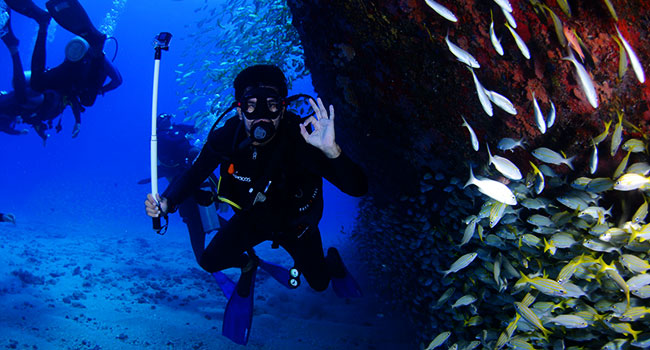 Getting around under water when you don’t have dorsal fins, a tail or scales can be hard work. Thankfully, us crafty humans have come up with a few neat modes of transport for a place we really aren’t evolved to be, as is our nature. Using weights and gases we can keep ourselves at the depth we need to be. With fins, we can swim sedately like scrawny whales and awesome inventions like personal propulsion vehicles mean we can have loads of fun zipping around when we’re down there. It’s key stuff, get this wrong and you’ll sink like a stone or bob on the surface like just some more flotsam, so pay attention!
Getting around under water when you don’t have dorsal fins, a tail or scales can be hard work. Thankfully, us crafty humans have come up with a few neat modes of transport for a place we really aren’t evolved to be, as is our nature. Using weights and gases we can keep ourselves at the depth we need to be. With fins, we can swim sedately like scrawny whales and awesome inventions like personal propulsion vehicles mean we can have loads of fun zipping around when we’re down there. It’s key stuff, get this wrong and you’ll sink like a stone or bob on the surface like just some more flotsam, so pay attention!
The speed of descent and ascent are crucial to a successful dive and indeed survival. Avoiding obstacles and getting out of the way of a mean looking ocean dweller is a skill that is fundamental to a safe dive. You’re balancing the upward force of your tanks’ and bodies’ buoyancy against your ballast weights, which sounds simple enough but can be a tough thing
Finding yourself underwater, you’ll want to get around. The standard method is with diving fins. You’ll find yourself using muscles you never thought you had, so practice and orientation is a must before any serious diving can take place. When you get the hang of them they’ll feel like an extension of your body and you’ll be off! There is an enormous variety available, built for
3. Underwater Vision
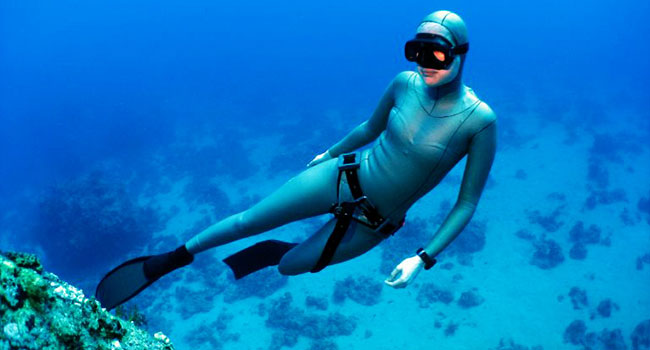 The sea is a dark place at any significant depth and even in clear tropical water, you won’t be able to see any further than 100 feet or so. A good pair of goggles is therefore essential. You need to keep an eye on your dive buddy at all times, getting lost in the ocean is a truly terrifying experience. Visibility can change drastically during a dive when the sun goes down or when sediment is raised from the bed you can quickly find yourself barely able to see your hands in front of your face. So be prepared, we’ve got the answers below.
The sea is a dark place at any significant depth and even in clear tropical water, you won’t be able to see any further than 100 feet or so. A good pair of goggles is therefore essential. You need to keep an eye on your dive buddy at all times, getting lost in the ocean is a truly terrifying experience. Visibility can change drastically during a dive when the sun goes down or when sediment is raised from the bed you can quickly find yourself barely able to see your hands in front of your face. So be prepared, we’ve got the answers below.
Waterproof LEDs are very useful even on daylight dives. Check out caves and stands of seaweed with confidence, and deter would-be predators with flashing lights. Let your buddies know where you are and keep tabs on them. Quite simply see what’s in front of you. Modern LEDs aren’t that power hungry, and batteries last a long time, but the prospect of going
Full face or just eyes and nose? These can vary from a whole face covering with an air feed so you can breathe normally and microphones for underwater communication to a simple eyes and nose mask. A snazzy mask with lights and all the mod cons can set your back some serious dollar, whereas for under 50 bucks you can get a perfectly serviceable mask that will take
4. Underwater Diving Suits
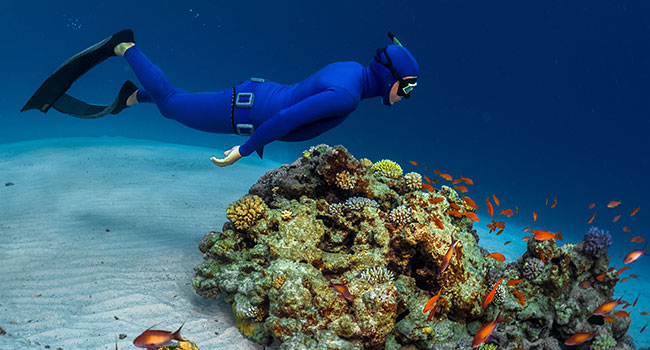 Comfort, warmth and maneuverability all play a part in how long you can stay diving and how much fun you can have. A suit that fits properly shouldn’t come to your attention during a dive, and one that doesn’t fit can shorten or even halt a dive. The human body loses heat much, much faster underwater than in open air. A wetsuit reduces this by providing a tight seal around the body. The water trapped between the suit and your body will help insulate, while a drysuit will form a tight seal to keep all water out, making diving in freezing conditions possible. Keep your underwear on and wear a rash vest if possible, you’ll chafe much less and if you choose a thermal vest, be much warmer. Depending on the conditions of your dive, you might want to opt for a short (shorty) suit, full suit (steamer) or keep your arms free (long johns). Diving suits are much warmer and more comfortable than they used to be, but they still wear out in a year or two of diving, meaning they aren’t the most environmentally friendly clothing around. Improvements are being made, so watch this space.
Comfort, warmth and maneuverability all play a part in how long you can stay diving and how much fun you can have. A suit that fits properly shouldn’t come to your attention during a dive, and one that doesn’t fit can shorten or even halt a dive. The human body loses heat much, much faster underwater than in open air. A wetsuit reduces this by providing a tight seal around the body. The water trapped between the suit and your body will help insulate, while a drysuit will form a tight seal to keep all water out, making diving in freezing conditions possible. Keep your underwear on and wear a rash vest if possible, you’ll chafe much less and if you choose a thermal vest, be much warmer. Depending on the conditions of your dive, you might want to opt for a short (shorty) suit, full suit (steamer) or keep your arms free (long johns). Diving suits are much warmer and more comfortable than they used to be, but they still wear out in a year or two of diving, meaning they aren’t the most environmentally friendly clothing around. Improvements are being made, so watch this space.
There are a few things to keep in mind while buying a wetsuit. Thickness increases warmth but reduces maneuverability, so it’s a trade-off. 5-7mm will protect against the coldest conditions (dry suits are better suited (sorry) to these conditions) but you won’t be able to move as freely. The style of suit is important, shorties are for warm water, mobile dives but not for
A dry suit will take you anywhere it’s possible for a person to dive. The layer of air trapped between your skin and the suit, combined with warm undergarments, can keep you toasty and warm in the most adverse conditions. People dive in the Arctic with these things. Temperature loss is dangerous, if you get too cold you won’t be able to surface on your own. When diving
5. Safety Equipment
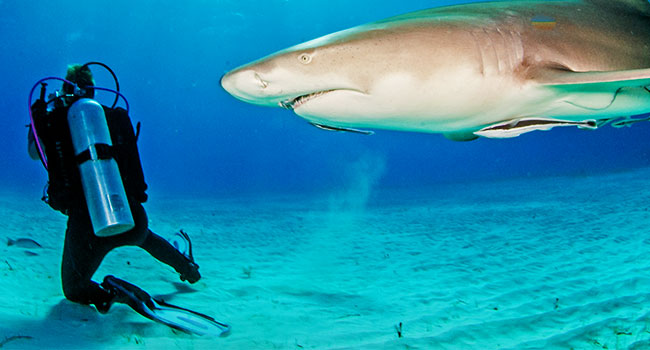 Safety first. If you get into danger, other people will have to risk their own necks to get you out of there. Be prepared, do your homework and have the right equipment in the right conditions. Things do go wrong but preparation can be the difference between badly, fatally wrong and “you’ll never believe what happened on our dive today” down at the bar. In most places, you won’t be able to dive without the proper safety equipment or training (and you really shouldn’t be diving anywhere that would let you without it). Your BC should have space for a lot of the stuff you’ll need, the rest can be clipped to D-rings or carried.
Safety first. If you get into danger, other people will have to risk their own necks to get you out of there. Be prepared, do your homework and have the right equipment in the right conditions. Things do go wrong but preparation can be the difference between badly, fatally wrong and “you’ll never believe what happened on our dive today” down at the bar. In most places, you won’t be able to dive without the proper safety equipment or training (and you really shouldn’t be diving anywhere that would let you without it). Your BC should have space for a lot of the stuff you’ll need, the rest can be clipped to D-rings or carried.
A good diving knife should be a few things, the first amongst them is sharp. Cutting ropes, stray lines or defending yourself against overly curious sea creatures shouldn’t be done with a blunt blade, it’s hard enough to move underwater. It should be long enough to be able to saw with and have a serrated part for cutting ropes. A textured rubber grip will stop it
Essentially a spare air canister, this can make the difference between surfacing and not. Even the most experienced divers can run out of air through a leak or faulty equipment. A spare, redundant system that isn’t affected by whatever fault might have emerged in your main system should be standard kit on any dive. Hands free when in use, a spare air canister can be
I have nightmares about losing the boat and surfacing in the blank, featureless ocean with no hope of rescue. I shouldn’t have watched that horror movie I know, but it’s a real concern. This is why surface marker buoys, or SMB’s, are essential to any dive. They link you or one of your buddies to a surface buoy that lets the safety boat know where you’re diving. It’s not at all
It’s my nightmare again. Come to the surface to find nobody there to pick you up. Your body temperature is dropping, it’s getting dark and there are pointy fins in the water. What do you do? Calm down, slow your breathing and activate your PLB/EPIRB. The emergency services will know where you are and dispatch a boat or helicopter to pick you up. They can communicate
A torch is a must, as is a noise maker. Sound travels much better in water than light so an acoustic signal is a pretty good way of getting your buddies attention in low visibility. A squeezable (no batteries to get wet) horn can be heard from a long way away. Octopus rigs have saved countless lives by enabling another diver to use your air supply. Small and portable, pack one. Most DC’s are computerized, so what to do if it crashes? Carry
6. Monitoring and Navigation
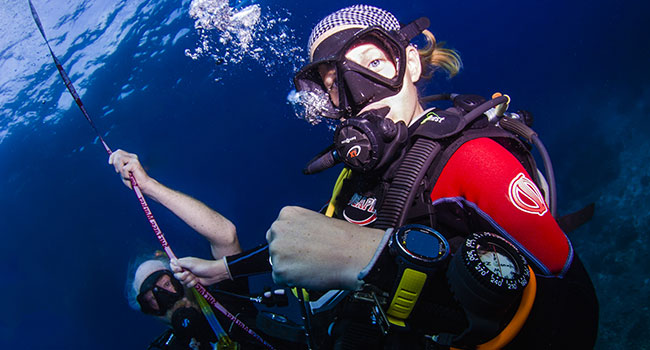 Knowing where you are, how much gas you have and where you are going is crucial for safe diving. Too far, too deep, too long and you’re (soggy) toast. You should have a dive leader and she/he should be the one you follow. Ideally, s/he should know where he’s going, but in the event of him/her losing their marbles or getting themselves lost, everybody on the dive should know the whole dive plan, have maps of where to go and what to do. Good monitoring will keep everybody alive and enjoying their dive. That means shelling out for the right equipment:
Knowing where you are, how much gas you have and where you are going is crucial for safe diving. Too far, too deep, too long and you’re (soggy) toast. You should have a dive leader and she/he should be the one you follow. Ideally, s/he should know where he’s going, but in the event of him/her losing their marbles or getting themselves lost, everybody on the dive should know the whole dive plan, have maps of where to go and what to do. Good monitoring will keep everybody alive and enjoying their dive. That means shelling out for the right equipment:
Don’t go anywhere near a dive without these, you’ll put yourself in serious danger. Get yourself a digital depth gauge, it’ll tell you very accurately how deep you are, as well as conditions like high pressure zones and temperature. A diving watch with a big, clear, illuminated face is not only totally cool but a very
This will track your oxygen levels, pressure, depth and time underwater to put together an ascent profile to help a diver avoid the bends on the way up. If you’ve switched gas during the dive some dive computers will factor this in. It all makes for much easier ascending. The computer will tell you when to ascend and how fast. Some will have audible alarms if you’re passing
7. Other Essential Accessories
You might have noticed by now that there’s plenty of kit involved in scuba diving, most of which you might die without. Well, here’s some more:
An essential tool on any dive, you’ll need a diving reel to find your way back out of a wreck or difficult bit of reef, or connect you with your buddies/safety boat. The ocean is a big, disorientating place, that yellow line stretching back towards to the surface is not only comfort but good navigation.
The first thing a diver wants when they get out of the water is a drink. But after that, dry clothing is usually on top of the list. Warm up and feel comfortable. But it’s been choppy and all your clothes are soaked and freezing cold. That’s a perfect recipe for misery. That’s why every dive boat has (or should have) at least one dry box or bag. Stick your clothes, food, delicate electronics
iiiEcho Sounder
Want to know how deep that chasm is? Whether you have the gas and time to get down there and up? Send an acoustic “ping” off the seabed to accurately gauge the depth you’re swimming in. You could be plotting out a future dive or mapping, or just want to know how deep the rabbit hole goes. Sound travels at a set rate under water, so by measuring the time it takes a signal to get from your echo sounder to the floor and back, the
ivGPS
If you know where you are when you dive and when you surface, you’re doing the right thing. A GPS will tell you to within a couple of feet where you are on the surface (they don’t work underwater!). This might be some way from where you started, but at least you know that and can radio the safety boat to come get you. If something bad happens and you need to
This is the stuff that could be handy but isn’t essential to own. You can get your bottles filled at nearly any harbourside in the world, so buying your own compressor might not be necessary. If you’re doing a lot of diving and don’t want to head back to land every day for more gas, a compressor could save a lot of money and time. Darn convenient having one around as well.
Scuba Diving Kit Failure: What To Do
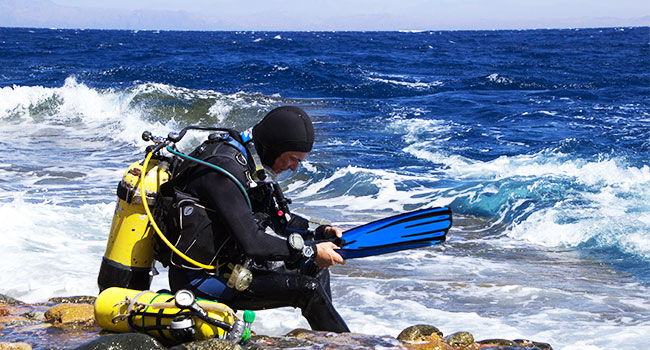 Stuff goes wrong. Things break, wear out or give up the ghost for no apparent reason. If it happens when you’re underwater, the results are far from OK. If you don’t know what to do, you’ll panic and make things worse. So practice what to do. Every experienced diver has a long list of stories where things have gone wrong but they got out alive and well, talk to whoever you can about what to do, after reading our advice of course.
Stuff goes wrong. Things break, wear out or give up the ghost for no apparent reason. If it happens when you’re underwater, the results are far from OK. If you don’t know what to do, you’ll panic and make things worse. So practice what to do. Every experienced diver has a long list of stories where things have gone wrong but they got out alive and well, talk to whoever you can about what to do, after reading our advice of course.
BCD Failure
If you lose control of your buoyancy you could be heading down into the murky depths a little faster than you might have wanted. If you go too deep, well, you know what happens then. If your BC is failing to inflate, check the low-pressure hose. Is it connected? That should do it. If not, you might have to orally inflate the BC. Slowly sinking into the darkness is not the place to be doing this for the first time, so practice before diving. The last resort is to ditch your leads and spare weight. Your natural buoyancy will take you back up. To avoid this, check and recheck your gear before every dive and clean it thoroughly after every dive.
Regulator Malfunction
Your regulator decides that the ocean needs all the gas in your cylinder far more than you. You watch as your precious life-giving air bubbles away. You’ve got a few minutes maximum unless you can sort it out. Breathing from a free-flowing regulator is possible but it’s difficult and unpleasant, and every second you’re not breathing it’s still letting gas out. Call your buddy over and use an octopus or his regulator to share his air or use a spare air bottle. If you can’t breathe from the broken regulator, shut off your cylinder to conserve the remaining air and head to the surface in the proper stages. The key to avoiding this calamity is proper maintenance. Clean and soak your gear after every dive.
Out of Air
But I need air to live! If you don’t have air, you’re going to die, so let’s get this one sorted. Checking air supply is a routine every diver needs to have totally down. Life underwater is distracting but you should absolutely be checking your air supply regularly. If you’re too far from a buddy or didn’t pack spare air, you could be in real trouble. Don’t panic, you’ll use more oxygen. Stay calm and switch to your spare bottle. If you don’t have one, make some noise with your tank or noise maker. Begin your controlled ascent. Go through your stages as calmly as possible, you might find there’s more air in the canister as the pressure drops. Check your gear for leaks before and after diving and clean them thoroughly.
Separated Mouthpiece or Mask
Nothing like an unexpected lungful of seawater to spoil your day, week or month. There is millions of years of evolution telling your body to get that water out of you as quickly as possible, so panic can set in very easily. But remember, you’ve got a second mouthpiece! Exhale into it if you can or use the purge button. If your lungs have water in them, or you don’t have a backup regulator, call an end to the dive. If your mask leaks or comes off, take it easy. Easier said than done, but it isn’t a life-threatening situation. Press the mask to your face and breathe out slowly but forcefully through your nose, tilting up as you do. The air should force the water from your mask in no time. This is definitely worth practicing in shallow water before diving.
Jammed Reel
Your marker buoy is ascending merrily to the surface to let the safety boat know what you’re doing and your reel jams and you’re being taken for an unplanned ascent. Images of the bends fill your mind with dread. Don’t be this silly, don’t ever clip a line to yourself. Let the reel out slowly and into a downcurrent so it doesn’t tangle you up. If you can, be anchored safely before letting it go. Should the worst happen, empty your BC, flare your body and try to cut the line. Should you be unable to disentangle yourself and surface, start your blown decompression procedure. Use breathing oxygen and get immediate medical attention. Don’t go back down to complete the missed stage, you’ll only endanger those who have to come get you out.
Stuck BC Inflator Valve
Your BC on the point of popping from too much air, or not inflating at all? Turn off the air feed and press the purge button. If this doesn’t work, try inflating your BC orally (you’ve practiced this, remember?). If it’s inflated too far, disconnect it and hit the dump valve, keep it open until the BC is where you need. This was probably caused by a faulty or, more likely, badly maintained inflater button. All your scuba diving gear needs cleaning and maintaining after every dive, and checking and rechecking. It’s a dumb way to get decompression sickness. Grab something stationary to prevent ascent, if already ascending, flare your body and vent the BC.
Failure of Computer
People did manage to dive without a DC, believe it or not. This is why we familiarise ourselves with our dive plan and all the details before going down. You should know, without needing your computer to tell you, how long you’ve been down, how deep you are and how much gas you have left. If you do find your DC has gone out, terminate the dive. You can use a buddies DC for monitoring your ascent. Don’t panic, it’s only a dive. Safety first at all times. You can get your spare and get right back in!
Unfamiliar Equipment
This really shouldn’t be a problem, you should be familiarised with all your equipment before a dive, but that isn’t how life happens is it? Something broke or went “plop” overboard and you had to borrow your buddies’ spare. It’s not what you know but it’ll do. Talk it through with whoever gave/ lent/sold you it, do they have any tips or advice? Read the manual. Check in shallow water before taking it deeper. And make sure your buddies know what you’ve got and how it works, and vice versa.
Maintenance of Scuba Diving Gear
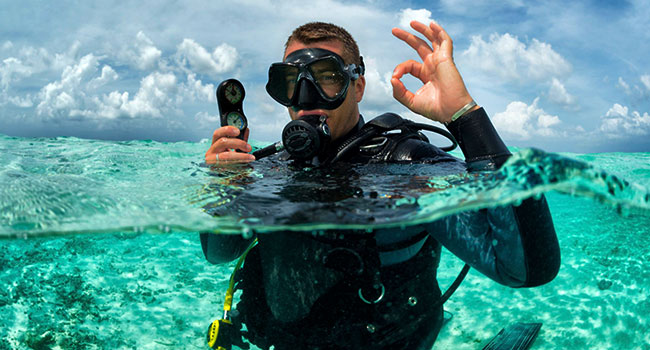 When stuff goes wrong, it’s usually that equipment hasn’t been cleaned or maintained properly. It can be time-consuming but it’s just part of the deal. Talk to any old divers and they’ll tell you some horror stories of equipment having failed and what happened next. They’re still alive and diving because they keep their gear in good condition. It’s as simple as that.
When stuff goes wrong, it’s usually that equipment hasn’t been cleaned or maintained properly. It can be time-consuming but it’s just part of the deal. Talk to any old divers and they’ll tell you some horror stories of equipment having failed and what happened next. They’re still alive and diving because they keep their gear in good condition. It’s as simple as that.
Salt water is corrosive as anything, if you leave it on your scuba diving gear and let it dry, or keep it damp, the salt will perish rubber linings, degrade plastic and corrode metal. So wash all your scuba diving gear in warm water after every dive, making sure to turn suits inside out and filing your BCD with water to rinse it. Puff a little air through the regulator to clear any debris, then put the dry dust cap on and soak in warm water for a few minutes. Rinse well, avoiding any water entering the second stage. If you’re storing, purge it first. Soak everything the same way. Dry everything thoroughly before storing away. It can be worth washing everything with mild disinfectant on the last dive of the trip.
Glossary of Frequently Used Diving Terms
- Aluminium 80 – Standard dive cylinder, holds 80 cubic feet of air at 3,000psi
- BC – Buoyancy Compensator. Helps maintain correct depth.
- Dump – Get rid of excess air or gear
- Booties Scuba boots will strap into fins
- Bottle – Gas canister, tank, where the air is stored
- Console – Displays depth and pressure
- DPV – Diver Propulsion Vehicle, often called scooters. Hand-held propellers.
- Farmer Jane/John – Suit that covers torso and legs only
- Free Flow – Uncontrolled gas escape
- Valve – Device that controls the escape of gas
- Hydro – Means water
- Rebreather – See above section, allows for long dives by filtering out carbon dioxide and recycling oxygen
- Octopus – Allows a diver to connect to their buddies’ cylinder and share air
- O-ring – Circular ring for attaching accessories
- SPG – Submersible Pressure Gauge
- Tube – Usually refers to a marker or dive signal
- First Stage – Reduces air from cylinder pressure to breathable pressure
- Second Stage – The breathing apparatus
Hazards of Scuba Diving
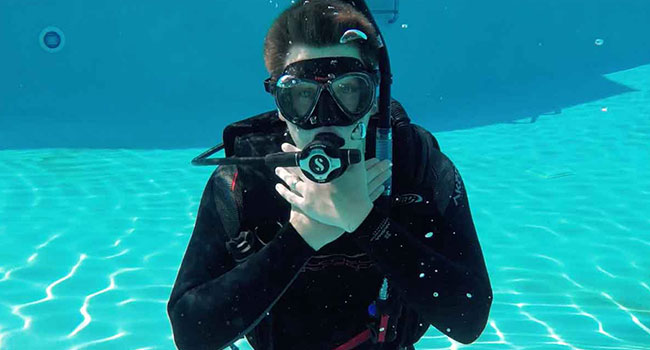 This could be a long list, starting with the very water you swim in, but we’ll focus on a few main hazards here:
This could be a long list, starting with the very water you swim in, but we’ll focus on a few main hazards here:
- Decompression Sickness (the bends) – When you descend, the increased water pressure forces nitrogen from the air into your bloodstream, where it stays quite harmlessly until the pressure decreases as you ascend. Then the nitrogen comes back out of solution, forming bubbles in your blood. This is bad news. The bubbles block your vessels and you die, or suffer strokes or infarctions. Returning to surface pressure slowly allows the nitrogen to come out of solution at a rate your body can cope with, letting you breathe it out. This is why ascents are done slowly and in stages. Often the ascent takes much longer than the dive at depth, but that’s a price divers pay. Want to avoid ascent stages? Get a submarine, or become a fish.
- Gas Bubble Formation – See Decompression Sickness above.
- Oxygen Toxicity – Oxygen is very, very reactive. Our bodies use this to great effect in every process in our body and we’re evolved to cope with the air we breathe being 21% oxygen. Increase that percentage and we struggle to cope with the oxygen reacting with our delicate lungs and organs. Some gas mixes (in rebreathers for example) use high oxygen levels but they can only work at some depths. Below 25 feet and pure oxygen becomes very toxic indeed, we’d die if we spent longer than 10 minutes deeper than that. High oxygen gas mixtures can help reduce ascent stage lengths and reduce risks of the bends, but should only be used with careful monitoring.
- Risky Diving Environment – There’s plenty down there that can do you harm. Breathe the water and you’ll find life difficult. There are sharks, eels, jellyfish, algal blooms, oxygen-free zones, clouds of silt, tangling weeds, fishing nets, unexploded ordnance, boats, toxic waste and many, many other things to make your life shorter than desired. One of the most dangerous things you’ll encounter on any dive is another human being. People are capable of astoundingly dangerous things, which leads us nicely onto the next point.
- Divers’ Incompetence – Not knowing what you’re doing is by far the most dangerous aspect of diving. A lack of training, knowledge or sheer darn stupidity can end your ambitions of further existence faster than any shark. Most accidents are caused by human error or equipment failure, and most equipment failure is caused by poor maintenance. Take good care of your scuba diving gear. Read the manuals. Read them again. Discuss your dive plan and equipment several times. Do a risk assessment. Do another. Talk it through. What are you going to encounter? What equipment do you need? Who has what and who will be where and when? Work out timings, gases, destinations and make sure everybody knows. Get yourself as much training as possible before diving. Go with experienced divers until you’re experienced. And do your homework. Lecture over.
Who Should Avoid Scuba Diving?
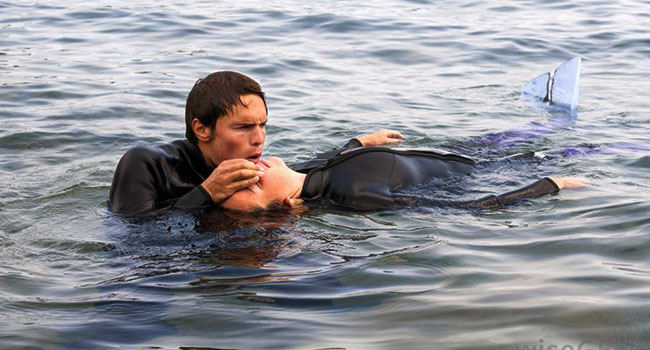
- Pregnant women shouldn’t go anywhere near scuba diving or for a few weeks at least after they’ve given birth. A miscarriage or complication at 80 feet doesn’t bare thinking about
- Smokers are at risk on dives as well, their reduced lung function can affect how much oxygen they can get from the gas mix. This could prove very dangerous in ascent and descent stages.
- Sufferers of asthma and epilepsy shouldn’t be diving either, an attack at depth could very easily be fatal and put other divers at risk as well.
- If you have a medical condition that means you could develop symptoms at any time or under stress, ask your doctor whether you can scuba dive. It’s not just your health at risk, by getting into complications underwater you endanger those who have to come rescue you, and your buddies will try.
That sounds rather final, doesn’t it? And scuba diving looks fraught with danger. Well, like anything fun in life, it is dangerous. Stuff can and does go wrong, but to focus on that would be to miss the point of life. Rarely will you feel as alive as when you’re 40 feet down, cruising in a school of brightly colored fish over a blooming coral reef in bright shafts of blue sunlight. Enough said?


